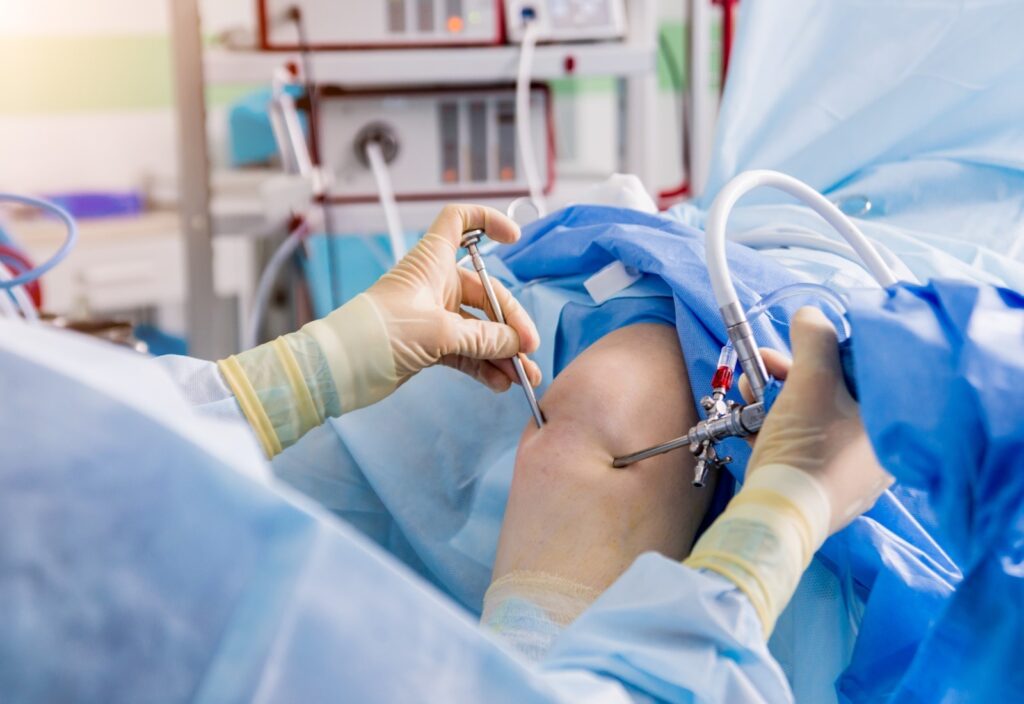Knee problems can significantly impact one’s daily life, limiting mobility and causing pain.
Fortunately, knee arthroscopy has emerged as a highly effective surgical solution for various knee conditions. This minimally invasive procedure allows orthopedic surgeons to diagnose and treat common knee problems with precision and improved patient outcomes.
Here are some of the most common knee problems treated with arthroscopy, providing insights into their causes, symptoms, and how arthroscopy can help restore knee function.
Meniscus Tears
Meniscus tears are among the most prevalent knee injuries, often resulting from sports activities or degenerative changes. Arthroscopy enables surgeons to repair or remove the damaged meniscus, alleviating pain and restoring knee stability.
Ligament Injuries
Knee ligament injuries, such as ACL or PCL tears, frequently occur during sports or sudden twisting motions. Arthroscopic techniques allow for precise reconstruction or repair of the torn ligament, promoting stability and facilitating a return to an active lifestyle.
Cartilage Damage
Cartilage damage can be caused by trauma, wear and tear, or underlying conditions such as osteoarthritis. Arthroscopic procedures can address cartilage defects through techniques like microfracture, cartilage transplantation, or autologous chondrocyte implantation, improving joint function and reducing pain.
Patellar (Kneecap) Problems
Patellar problems, such as patellar instability or patellofemoral pain syndrome, can cause discomfort and hinder knee movement. Arthroscopy allows surgeons to assess and treat these conditions, including realigning the patella or removing damaged cartilage.
Synovitis
Synovitis refers to inflammation of the synovial lining of the knee joint, often resulting from underlying conditions like rheumatoid arthritis or infection. Arthroscopic procedures can remove inflamed tissue and alleviate symptoms, promoting joint health.
Loose Bodies
Loose bodies, such as bone or cartilage fragments, can cause pain, swelling, and limited knee movement. Arthroscopy enables surgeons to identify and remove these loose bodies, restoring normal joint function.
Knee Joint Infections
Infections within the knee joint can lead to severe pain, swelling, and limited mobility. Arthroscopic procedures, including irrigation and debridement, can effectively address infected joint tissues and promote healing.
Baker’s Cysts
Baker’s cysts are fluid-filled sacs that form at the back of the knee, often due to underlying conditions such as arthritis or meniscus tears. Arthroscopy can treat Baker’s cysts by draining the fluid and addressing the underlying cause.
Knee Osteoarthritis
While knee arthroscopy is not typically used for advanced knee osteoarthritis, it can still provide benefits in select cases, such as smoothing rough cartilage surfaces or removing loose bodies.
Knee arthroscopy has revolutionized the treatment of common knee problems, providing patients with a minimally invasive solution that restores function, reduces pain, and accelerates recovery. Whether it’s meniscus tears, ligament injuries, cartilage damage, or other knee conditions, arthroscopy offers precise interventions that help individuals regain mobility and improve their quality of life.



